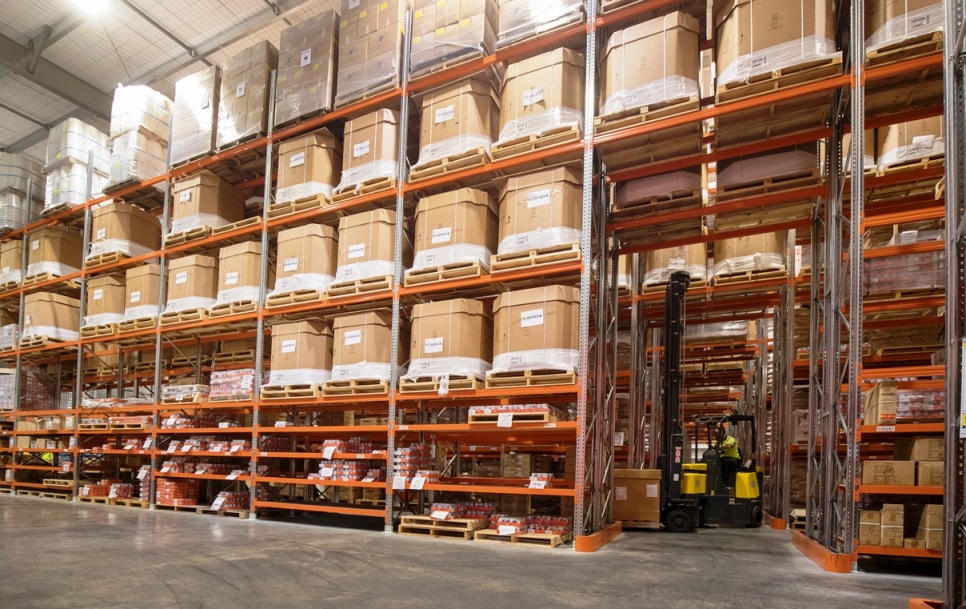Transport and logistics specialists Booth’s Group are emerging from the pandemic lockdown with expectations of steady growth under a new brand profile.
Last year, the family owned transport business Booth’s Transport diversified with the acquisition of Tomoana Warehousing and is now operating across a widened footprint with an increased range of services.
The companies will remain as separate entities but are now being marketed under the Booth’s Group umbrella to show the full scope of services in each direction.
Tomoana and Booth’s saw the likely synergy of a group structure with similar core values around service, safety and compliance and, according to executive director Trevor Booth, the two divisions are complementary in resources, systems and processes.
He told Shipping Gazette the corporate move provides customers with access to a broader network geographically and a wider range of service offerings across road transport, logistics, warehousing, container handling and export assistance.
There is also increased capability in key areas such as sales, health and safety, training and I.T.
The group’s core assets are in eastern and central North Island, with locations at Wellington, Palmerston North, Hastings, Tauranga and Auckland.
Booth’s have been in business for more than 25 years and they operate nationwide logistics services. from head office in Palmerston North and branches in Wellington, and Mount Maunganui.
The network offers cross-dock freight capability and specialised bulk load handling where the use of lighter truck and trailer units improve the economics of moving large volumes and weight sensitive freight. From the Seaview, Wellington, site, for example, Booth’s vehicles provide direct transport of Winstone gib-board to construction projects. The Booth’s fleet ranges across flat decks, curtain-side and long-haul.
Warehousing is predominantly driven by Tomoana, which has extensive capacity in leased third party logistics facilities.
From a logistics hub in Hastings, Tomoana’s earlier growth strategy included linking Hawkes Bay to Tauranga, across to Hamilton and Auckland, the “Golden Triangle” in which freight is concentrated.
Mr Booth said that the group’s Hasting site which offers food grade warehousing to the fruit growing and processing industry of Hawke’s Bay. “The perishables industry is a large part of Tomoana’s business which will benefit from further expansion of the region’s horticulture.” The continued expansion of Napier Port, which listed on the Stock Exchange in 2019, is indicative of the growth potential of Hawke’s Bay business.
Tomoana is offering 15,000m2 of modern ambient dry store warehousing which meets all the regulatory requirements, including MPI Biosecurity transitional facilities hazardous goods handling and customs services. At Tauranga it has a smaller 1,100m² site.
The company is storing a wide variety of products including food ingredients, agriculture chemicals, packaging, timber and fertilisers. It also offers temperature-controlled space as part of a container handling role. Container hire or purchasing is another service.
The container handling fleet includes swinglifts, skeletal trailers, top mount forklifts, straddle carriers and generators.
The business also manages order fulfilment online businesses, importers, or simply those wishing to outsource the supply chain management to the import sector and online businesses.
Palletised freight operations include HPMV length curtain-sided B- trains and quad trailers as well as lightweight curtain sided trailers (14 -metre and 15.7 metre) or flat decks.
Extendable trombone trailers between 15.1 to 23 metres can transport loads up to 29 metres in length and up to 28 tonne payloads.
Mr Booth sees the overall group as well positioned within the freight and logistics sector.
“During the lockdown our work was largely deemed to be essential but there was an impact and we needed to put a part of the fleet into hibernation for a couple of weeks. “There is uncertainty around the economy but we intend to make sure we are ready for a resumption of activity and we have kept all of our staff employed.”
“We have been working very hard on the core business, which is where we wish to focus our resources.” He said that divestments have been made in the transport portfolio. “We have exited from the forestry logging industry where scale and heavy haulage is a key factor and where the resource committed is high value but handling low volume.
“It’s not our mission to increase resource allocation in such sectors, which are more an opportunity for operators with the scale and industry knowledge to make it work.” He said the operational variance and regulatory framework that comes with diversification are issues to be recognised. “When you have diverse transport modes it can bring increased costs, require more training and a willingness by drivers to handle containers one day and logs the next.”
The group fleet comprises some 150 units with a concentration on Kenworth and Scania vehicles for long-haul trucks and Hino for metro services. At any time, Booth’s will have 10-15 units working on long haulage to the South Island, where it works with high quality service partners with high quality facilities.
All group vehicles have EROAD devices deployed in-cab. “We see high value in having EROAD aboard for safety purposes in the best interest of drivers as well as logging vehicle performance for both maintenance and back-end compliance.”
A full review of the logistics capability will continue the focus on technology supporting expansion prospects. Despite the pandemic-related disruption in the country’s supply chain, the reshaped group is clearly moving forwards following the integration the Booth and Taylor family businesses.

